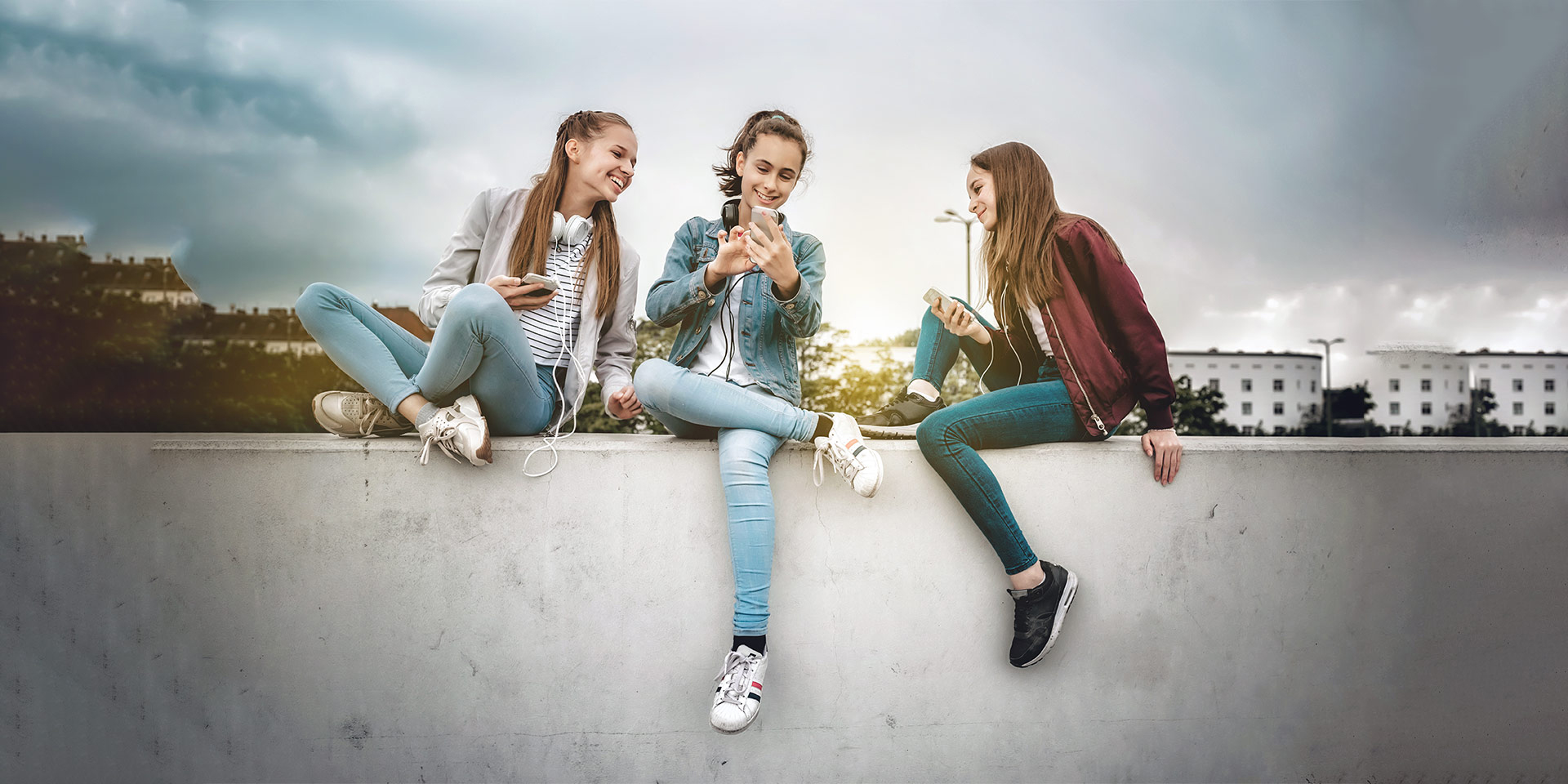“I’m 14 years old — and I’m sick and tired of social media.” (Riley Jackson)
Many young people measure their popularity by the number of followers, friends or likes they have on social media, which can affect their self-esteem.
Riley recalls the night she decided to check out Snapchat, one of the most popular social networks at the time. She opened the Snapchat story of one of her closest friends, only to find that the whole group had met up without her. Perhaps they thought she was out of town? Still, the heartbreak she felt was unbearable.
“The big thing for me is that I am hoping to learn to balance the best of social media with the real world, making sure that instead of worrying about what I’m missing, I make the most of every moment I’ve got,” Riley concludes.
It’s easy to think that having lots of online friends will make us feel better about ourselves. Yet a list of thousands of friends, likes or followers doesn’t guarantee that we’ll have someone to turn to when we’re lonely, disappointed or really need a friend. “Talking” from behind a screen to people we barely know is no substitute for a real relationship and does not create a real sense of belonging.
The impact of social media on friendships
During adolescence, friendship and peer approval are crucial. The Pew Research Center surveyed 743 teens between the ages of 13 and 17 over a two-month period in 2018, and the report’s findings on social networking and friendships are as expected.
Some 81% of teens say social media makes them feel more connected to what’s going on in their friends’ lives. In addition, two-thirds say these platforms make them feel like they have people to support them through difficult times.
The research shows a difference between social media friends and real friends. Sixty per cent of teens say they spend time with their online friends every day or almost every day. But only 24% spend time with their friends in person outside of school.
The big question
Is it possible that this discrepancy between our expectations of the happiness we see online and the reality is making us feel more anxious and depressed? This has become one of the most controversial questions about teen technology use, with studies showing mixed results.
Many experts believe that the constant overstimulation of social media use triggers the nervous system’s fight or flight response. As a result, conditions such as ADHD, teenage depression and anxiety tend to worsen. In addition, the frequency of social media use is inversely correlated with adolescents’ mental health.
In a 2018 study, 14- to 17-year-olds who used social media for seven hours a day were more than twice as likely to have been diagnosed with depression, treated by a mental health professional, or received treatment for a mental health condition or behavioural problem in the past year, compared to those who used social media for about one hour a day.
“It has a huge impact on young women’s self-esteem, because all they ever do is design themselves for people to like them. And what comes along with that? Eating disorders. And that makes my blood boil. And is the reason we don’t have any social media in our house,” said actress Kate Winslet.
Snapchat Streaks
Most social media apps come and go, sticking in users’ minds for a short time and then fading away to make way for the next trend. Snapchat is constantly changing to avoid such a trajectory and does its best to keep users interested, whether it’s new daily filters, trophies or what seems to be the network’s most successful innovation, Snapchat Streaks. This feature keeps track of consecutive days that people have been in contact via the app.
Snapchat Streaks is essentially a number next to the user’s name. On Drake University’s campus, the average number of streaks among high school and college students was 390 consecutive days.
Liz Bregenzer and Anna Jensen, students at Drake University, exceeded 1,000 consecutive days on Snapchat. They say it’s important to keep up because it would be devastating to lose such a remarkable streak. But they don’t have to work too hard to keep it up—Snapchat seems more like a text-messaging app, says Bregenzer. While opinions vary, most Snapchat users like that they can express their emotions and actions much more clearly than through text messaging.
First-year student Zoe Dittmar also has a long string of Snapchat Streaks—over 1,000. She believes that for many young people, Snapchat is just an easier way to get to know people and that they can have a much shorter conversation on the app than by texting.
However, not everyone sees the reason for the fuss over Snapchat Streaks, with some arguing that they encourage mindless communication. “I’ve never seen Snapchat as an important part of social media use because of the almost forced nature of the app. Just photographing faces and having small conversations for no real reason just doesn’t make sense to me,” said Anna Neidermeier, a freshman at Drake University. “These Streaks have become such an important part of Snapchat that I think they reinforce the idea that it’s important to maintain a certain social image, a certain number of consecutive conversations, and a certain number of notifications every day to feel good about yourself.”
Snapchat Streaks have gone viral on the app, but have become a controversial topic. People are trying to decide whether streaks are a great way to communicate that will replace text messages, or a meaningless form of communication that simply leads to an increasing reliance on technology.
The value of life outside the public eye
Friends, celebrities and even strangers now present their lives to the masses with little regard for privacy or consequences. The ever-expanding universe of these platforms demands more thoughtful behaviour that enables us, the users, to define how we want to engage with our friends and the online world. Otherwise, we risk allowing social media to define and potentially destroy our friendships.
“I just want people to see the work that I’m proud of. I feel like you let people touch you when you have Instagram or Twitter, and I don’t want to be touched all the time. I’m not going to do that—ever.” (Elizabeth Olsen)




















